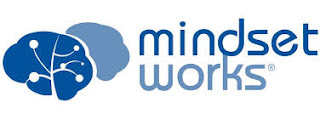Explain and provide examples for ways in which schools can best address the following seven International Society for Technology in Education (ISTE) standards through programs and activities.
1. Empowered Learner - An empowered learner is one who has a classroom with a variety of technology choices and can choose which one fits his needs best. The student is comfortable in using these tools independently. In the process of working with a variety of devices and tools, students are empowered to create some of his own learning goals. I was reading about Mindset Works developed by SchoolKit, "an app designed to strengthen academic and social and emotional success. Through animations, assessments, and classroom activities, students learn a growth mindset—the understanding that ability develops with effort." (Office of Educational Technology, 2018). This would be an example of a technology tool that would allow students to take an active role in their learning and goal setting.
2. Digital Citizen - As teachers and parents, it is our role to help students understand that just like a lot of other things in our world, if technology and the internet are not used safely, there is much danger in it. Examples such as riding a bike without a helmet, playing with fire, jumping off a platform that is too high are all examples of things students could relate to being dangerous if not respected. Technology and the internet are the same. It can be a great resource and tool, but it can also be a dangerous avenue to find real trouble. An example I can think of for this is when you see on facebook, teachers that have posted a photo and then wants to see how far that photo can go as far as likes and sharing around the world. This helps students see the potential of what they share or seek out from the internet can get into the wrong hands and can be dangerous.
3. Knowledge Constructor - As a knowledge constructor, students must be able to utilize technology tools that make learning meaningful for themselves and others. An example of a tool used here could be using a story map app. Students would be able to use the tool to build knowledge and make connections to books and stories they have read or perhaps they are making up stories to solve classroom, school, community, or world problems.
4. Innovative Designer - Speaking of real world problems, for this standard, I came across an online book while searching that gave an example of "Bringing Real-World Problems to Classrooms". (Committee on Developments in the Science of Learning, 2000, p. 208). It talks about an architect team that was working to build a new play space for the community. The challenge to the students was to use design technology to build and create their ideal play space. This fits in perfectly to standard number 4 of students using a variety of technologies to solve problems using imaginative solutions. This would work perfectly in teams of students also enhancing their cooperative skills.
5. Computational Thinker - "The Pack, funded through a STEM+C grant from the National Science Foundation and the JPB Foundation, is an open world app being produced by NYSCI. This app aims to engage middle school-aged children in utilizing computational thinking skills and immerses the player in a fantastical world in which their choices and decisions may have long-ranging environmental impacts." (Thompson, 2018). This is a perfect example of helping students develop computational thinking skills. And when you continue to look into the program, there is a number to contact to find out more information if one was interested in applying it to their school.
6. Creative Communicator - As a teacher, a great way to assess a students understanding of materials is through presentations. Allowing students to use technology to create a presentation meets standard 6. Using technology for student presentations gives them the tools to create original works while building their skills in the use of technology. Not to mention this is a skill that students will need long past their school days. They may have jobs that they have to present at or maybe they are very involved in their community and need to present in that capacity. When googling effective presentation tools for students, a few that came up were; Nearpod, Shadow Puppet Edu, and Sprial.
7. Global Collaborator - What better way to learn about our world than through real life connections with other students and schools. Skype is an easy way to build a relationship with another classroom of students in the same grade or same subject. Another way to connect with the other students throughout the world is through PenPal Schools. Both of these technologies encourage students to "use digital tools to broaden their perspectives" and learning globally.
References:
Committee on Developments in the Science of Learning. (2000). How people learn: Brain, mind, experience, and school. Washington, D.C., National Academy Press. Retrieved Oct. 21, 2018, from https://www.nap.edu/read/9853/chapter/13
Common Sense. (2018). Retrieved Oct. 21, 2018, from https://www.commonsense.org
Office of Educational Technology. (2018, Oct. 21). Assessment. Retrieved Oct. 21, 2018, from https://tech.ed.gov/netp/assessment
Thompson, Wren. (2018, April 20). Using an app to engage kids in computational thinking. Retrieved Oct. 21, 2018, from
https://nysci.org/using-an-app-to-engage-kids-in-computational-thinking



No comments:
Post a Comment